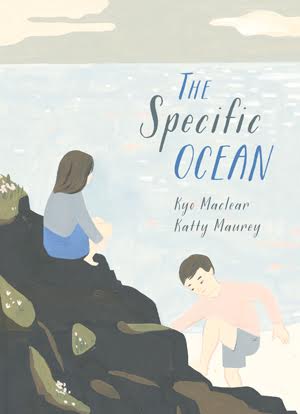| ________________
CM . . .
. Volume XXII Number 2. . . .September 11, 2015
excerpt:
Taking a step outside your comfort zone can be scary. If you are a child leaving the city and all that is familiar for a seaside vacation where all is strange and new, that can be a tough thing to face. The Specific Ocean is the story of a child reluctant to experience the ocean for the first time but soon discovering its delights. So much so, that when it comes time to leave, she struggles to find a way to keep the magical memories alive. Through the simple language and first person viewpoint, the reader will relate to the child’s initial expressions of indifference, boredom, dogged opinion, and pre-conceived notions: “I count the days until we can go home….I know the water will be cold.” But the author subtly begins to slip in small details of change: patches of warmth in the water, the sensation of floating on the waves, watching and listening to the steady repetitious ebb and flow, and sounds of the tide. Onomatopoeia is the perfect device here: splish, swish, splosh, splash, and wash, swash, splush, hush. The words give a voice to the ocean and arrest the pace of the story and the child’s energy. Now in slower motion, she’s ready to observe specific sensory details, such as the shimmer of sun on the waves and the size of the sea. No longer indifferent, her growing interest is shown through the idea of trying to capture some of the ocean to keep at home and by questioning what the world would be like without it. Finally, on the last night, she stores up memories of the sounds and sights to take home as a lasting remembrance of that “specific ocean.” While the author steadily fills the story with positive emotions about the natural world, the illustrator offers fine whimsical sketches on pastel-toned backgrounds. The child’s room and early images of the seaside shown through her unhappy mood are pale, indistinct. As her interest emerges at the shore, the blues and greens are enhanced, with more detail of what she sees. There’s a suggestion of mystery as she listens to the sounds from underwater and imagines “creatures silent and invisible.” Overall, the softness of the mixed media drawings complements the gentle tone of the text to produce a convincing, if quiet, result. The Specific Ocean is a book that will be reread and thought about for its varying nuances of meaning. Highly Recommended. Gillian Richardson is a freelance writer living in BC.
To comment
on this title or this review, send mail to cm@umanitoba.ca.
Copyright © the Manitoba Library Association. Reproduction for personal
use is permitted only if this copyright notice is maintained. Any
other reproduction is prohibited without permission.
Next Review |
Table of Contents for This Issue
- September 11, 2015. |
